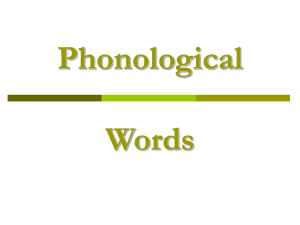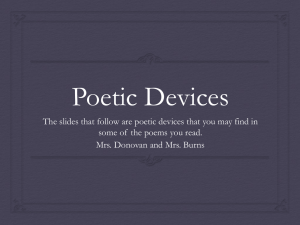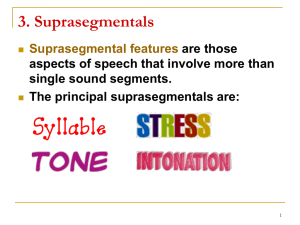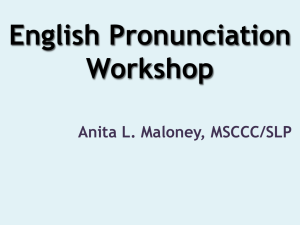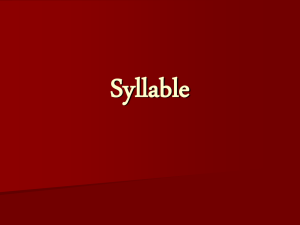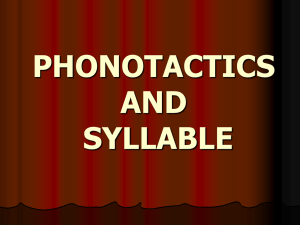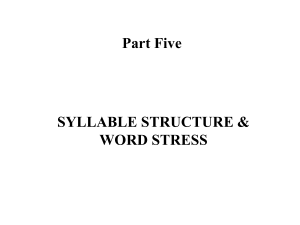Syllable Structure in English
advertisement
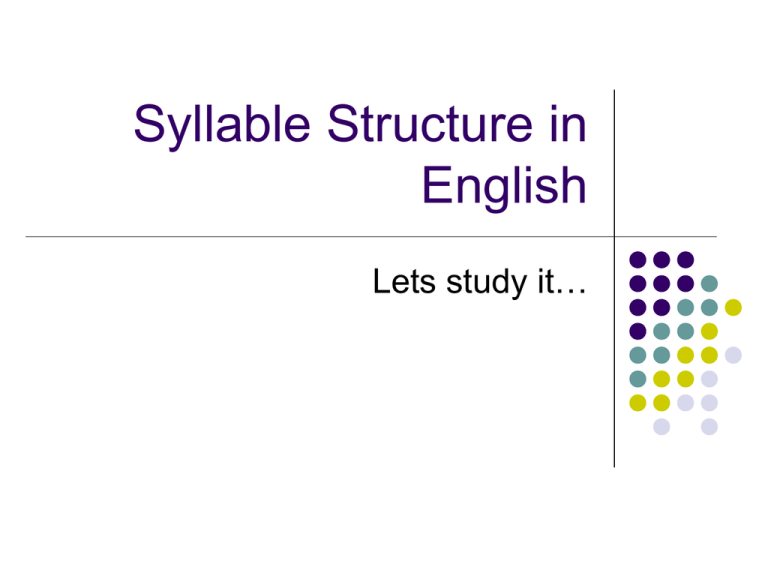
Syllable Structure in English Lets study it… Words can be cut up into units called syllables. Humans seem to need syllables as a way of segmenting the stream of speech and giving it a rhythm of strong and weak beats. Syllables exist only to make speech easier for the brain to process. A word contains at least one syllable. Syllables and their parts The parts are onset and rhyme; within the rhyme we find the nucleus and coda. Not all syllables have all parts; the smallest possible syllable contains a nucleus only. A syllable may or may not have an onset and a coda. Onset (O) Onset: the beginning sounds of the syllable; the ones preceding the nucleus. These are always consonants in English. The nucleus is a vowel in most cases, although the consonants [ r ], [ l ], [ m ], [ n ], and the velar nasal (the 'ng' sound) can also be the nucleus of a syllable. Rhyme (R) Rhyme (or rime): the rest of the syllable, after the onset (the underlined portions of the words above). The rhyme can also be divided up: Rhyme = nucleus + coda Nucleus (N) is the core or essential part of a syllable. A nucleus must be present in order for a syllable to be present. In English and most other languages, most syllable nuclei are vowels. The English liquids [ r l ] and the nasals [ m n ] can be the nuclei of syllables under certain conditions. [ r ] can be a nucleus as easily as a vowel, in any position: the words 'bird', have [ r ] as the nucleus; in other words, there is no vowel in the pronunciation of these syllables, even though they have one in the spelling. [brd] [ l ] and the nasals [ m n ] become syllable nuclei when they follow an alveolar consonant in the last syllable of a word. This happens in the relaxed or casual rather than very formal articulation of the word. Compare casual vs. formal pronunciations of 'button', 'bottle', 'bottom'. Linguists often use tree diagrams to illustrate syllable structure. 'Flop', for example, would look like this (the word appears in IPA symbols, not English spelling). 's' = 'syllable'; 'O' = 'onset'; 'R' = 'rhyme'; 'N' = 'nucleus'; 'C' = 'coda'. The syllable node at the top of the tree branches into Onset and Rhyme; the Onset node branches because it contains two consonants, [ f ] and [ l ]. The Rhyme node branches because this syllable has both a nucleus and a coda. σ / \ O R /\ / \ | | NC | | | | [f l a p] Steps to determine the diagram: a. b. c. Determine the nucleus (N) Add Rhyme ( R ) on the ordinate of the nucleus Determine the onset (O) and the coda (C). a. a. If a syllable has the coda, it is called as closed syllable Example : cap, sit, man If a syllable doesn’t have the coda it is called as open syllable. Example : he, she, me Draw, the syllable structure of the following words: apron basic began begin depend even hotel
